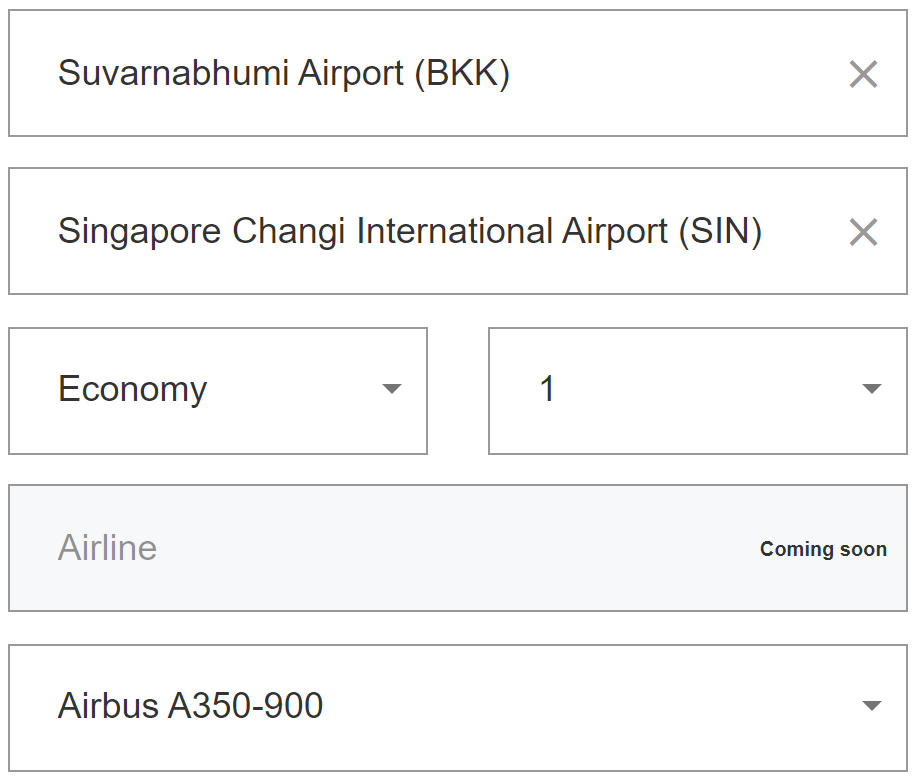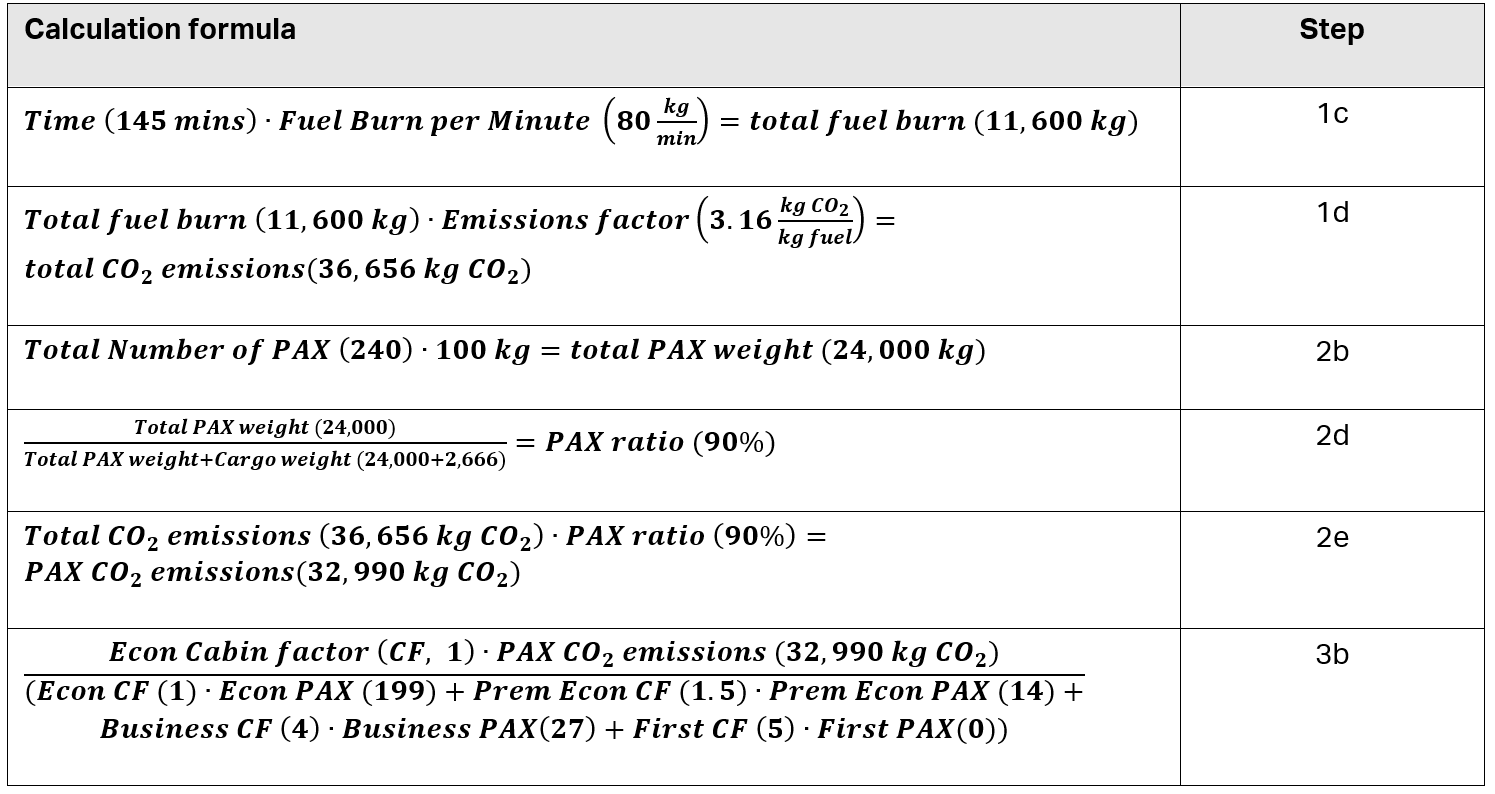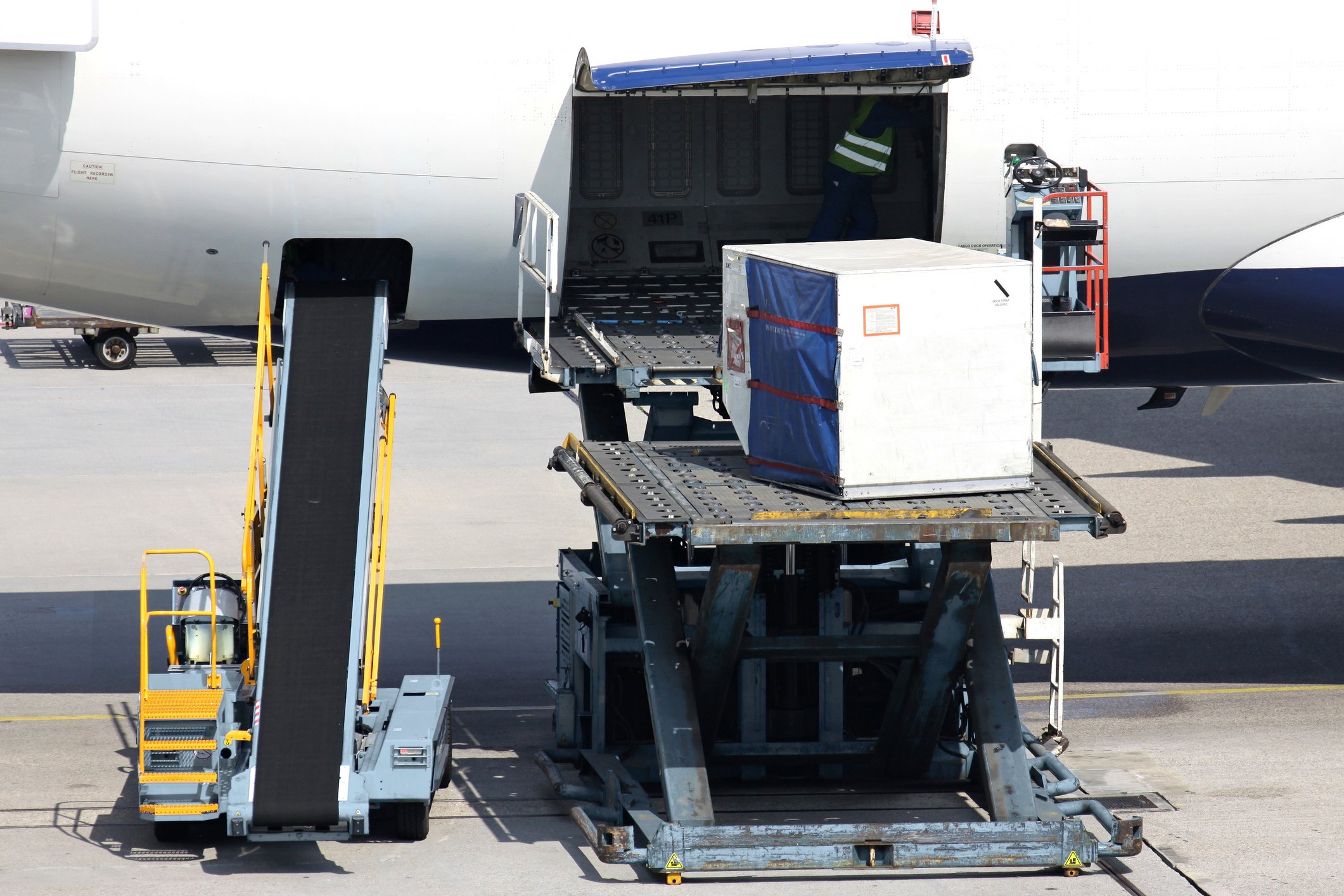Need Help?
Connecting primary data from airlines to CO2 emissions calculations
Display, monitor, benchmark and report CO2 emissions from air transport based on primary data from airlines.
Need Help?
IATA CO2 Connect is an emissions calculator developed with real airline data based on industry approved recommended practices that can easily be integrated into your operations.
Travel agencies, booking search engines, freight forwarders and corporate travel managers among others want to do their part in offering more accurate visibility on the carbon footprint of flights and shipments. Starting with providing your customers with accurate, transparent data is key to helping them track, reduce, report, and offset some of their carbon footprint.
> Skift idea awards: ATPCO and IATA shortlisted in the Sustainability Category as one of the 5 finalists
> Delta Air Lines becomes latest contributor to IATA CO2 Connect
Who is IATA CO2 Connect for?
Airlines
With increased demand and requirements to display CO2 emissions for flights, airlines need to consider how their CO2 information is calculated.
Travel Agencies and Booking Search Engines
Offer your customers the ability to compare the carbon footprint of flights and make informed decisions. Display CO2 emissions pre-flight for search or on the booking/confirmation.
Corporate Travel
Assess the environmental impact of your companies flights and align future business travel with your company's sustainability goals.
Why choose IATA CO2 Connect?
Provide consistent and transparent CO2 calculations based on industry approved recommended practices using primary airline data. Use actual fuel burn data from 75 aircraft types, representing nearly 98% of active global passenger fleet. IATA CO2 Connect considers traffic data from 881 aircraft operators, representing approximately 93% of global air travel.
1. Get on the track of sustainability
- Get carbon emissions data directly from the air transport industry
- Integrate sustainability into your strategy and for carbon reporting
- Meet today's air passenger and cargo environmental expectations
2. Data accuracy
- Base CO2 calculations and decisions on data provided directly from airlines
- Data based on airline aircraft and operational performance
- Calculations based on industry approved recommended practices and methodology
3. Easy to use
- Simple API or Flat file formats that can easily be integrated into your software or webpages
- Effortlessly display carbon emissions to your customers
- Continuously evolving based on up-to-date requirements and considerations such as SAF
Calculator
What is IATA CO2 Connect?
IATA CO2 Connect is a CO2 emissions calculator designed for commercial passenger flights. This solution supports airlines, travel management companies, travel agencies, integrators, and Global Distribution Systems (GDS) to easily integrate accurate CO2 emissions calculations into their operations.
Built on the industry-standard IATA Recommended Practice 1726, IATA CO2 Connect leverages a per-passenger emissions calculation methodology developed in collaboration with airlines and other aviation industry stakeholders. Unlike many other calculators that rely on theoretical data models, IATA CO2 Connect uses real operational data from airlines, including aircraft type-specific fuel consumption and airline-specific load factors, ensuring unparalleled accuracy and reliability.
How are CO2 emissions calculated?
The calculation are performed in three key steps:
- Calculating the total CO2 emissions of a flight.
- Allocating CO2 emissions between passengers and (belly) cargo.
- Allocating the CO2 emissions to individual passengers based on cabin/travel class.
What calculation methodology is used?
Passenger CO2 emissions in IATA CO2 Connect are calculated in line with the IATA Recommended Practice RP1726 adopted by IATA’s Passenger Service Conference in March 2022. This methodology was created through collaboration between airlines, leading aircraft manufacturers, and international standard-setting bodies.
What differentiates the IATA CO2 Connect calculator from other calculators?
There are three main differentiation points between the IATA CO2 Connect calculator and other calculators:
- Actual airline data is used for aircraft type-specific fuel consumption, passenger load factors, and belly cargo weight. Other calculators model fuel consumption or provide generic estimates using theoretical data models and assumptions and not necessarily considering all aircraft models. Hence, they may not consider airline operational efforts to reduce fuel consumption, and thereby per-passenger CO2 emissions, and as such lower the accuracy of their results.
- A time-based approach is used as opposed to a distance-based one which is more appropriate for air transport versus other modes of transport. The emissions of a flight can vary significantly depending on the direction of travel between two airports, and using a time-based approach captures these variations more accurately. For example, flights between North America and Europe tend to take longer westbound than eastbound, due to the prevalent winds, and IATA CO2 Connect emissions estimates reflect this.
- There is alignment between passenger and freight transport in CO2 emissions calculations. Many CO2 emissions calculators are either passenger-specific with no cargo/freight considerations or freighter calculators without passenger weight/payload considerations. IATA CO2 Connect has aligned calculations for passenger and air cargo transport.
What are the key determinants of a flight’s CO2 footprint?
Factors which influence the CO2 footprint of an individual’s air travel can generally be divided into two categories: factors which influence the emissions of a flight, and factors which influence the allocation of the aircraft’s emissions to individual passengers.
The key determinant of emissions of any given flight is fuel consumption, driven by factors such as aircraft type or flight duration – the latter often influenced by weather and airspace efficiency. Generally, larger and heavier aircraft tend to emit more on a given route. However, their higher capacity may result in lower per-passenger emissions.
In order to accurately allocate the CO2 emissions per passenger, the weight ratio between passengers and cargo must be determined. The larger the share of cargo weight, the more emissions are allocated to it.
Once the share of the flight’s emissions attributed to all passengers is known, the allocation between individual passengers depends on:
- The total number of seats on the aircraft, as well as their distribution between different cabin classes; and
- How full the aircraft is, i.e., how many seats are occupied by passengers (passenger load factor).
A larger number of passengers onboard – whether through a larger number of seats or a larger portion of seats being filled – tends to result in lower CO2 emissions allocated to an individual passenger.
Please refer to the data model documentation here.
Do you have any additional questions? If you have questions not answered in the FAQ section, please contact the IATA CO2 Connect team.
Is there a calculation example?
Please refer to the data model documentation on page 10, here.
Any technical questions or issues to report?
We are constantly building on the accuracy of the calculator which includes the aircraft type selection. If you have noticed any issues, or have questions not answered in the FAQ below, please contact the IATA CO2 Connect team. Please make sure to include all relevant information (and screen-shots, as applicable).
Calculation Methodology and Example
How are CO2 emissions calculated?
Passenger CO2 emissions are calculated in line with the IATA standard recommended practice RP1726. In practical terms, the calculations are performed in three key steps:
1. Calculating Total CO2 Emissions of a Flight:
a. A flight schedules database is queried based on the chosen route:
- If a match is found, up to 10 aircraft types are available for user selection. By default, the most used aircraft type is pre-selected.
- If no match is found, the (great circle) distance between the origin and destination airport is calculated based on the route. Up to 10 aircraft types that are flown on similar distances are available for user selection. By default, the most used aircraft type is pre-selected.
b. Total flight time (block time, from gate to gate) is based on the route and the chosen aircraft.
- Scheduled flight times may vary on a specific route, even if they are operated by the same aircraft type. In these instances, a weighted average flight time is used.
c. The IATA CO2 Connect calculator is time-based. Hence, the flight time is multiplied with a fuel consumption factor (in kg/min) specific to the chosen aircraft type. This gives the total fuel consumption of a flight.
d. The fuel consumption is multiplied by the ICAO CORSIA CO2 emissions factor for jet kerosene of 3.16, resulting in the total CO2 emissions for the flight.
2. Allocating CO2 Emissions Between the Passengers and (Belly) Cargo:
a. Projected number of passengers for a flight is calculated based on the cabin configuration of the selected aircraft type and the passenger load factor.
b. Total weight of all passengers (and their baggage) is calculated by multiplying the number of passengers by the standard weight of 100kg.
c. Projected (belly) cargo weight is determined based on the aircraft type.
d. A ratio of total passenger weight and total (passenger + belly cargo) weight is calculated.
e. The total CO2 emissions for the flight are multiplied by this ratio, resulting in the share of the flight’s emissions that is attributed to all the passengers.
- The difference between the total CO2 emissions for the flight, and those that are attributed to all the passengers, are the CO2 emissions allocated to belly cargo.
3. Allocating CO2 Emissions to Individual Passengers Based on Cabin/Travel Class:
a. For each of the cabin classes (economy, premium economy, business, or first), the expected number of seats in the cabin class is determined, depending on the selected aircraft type.
b. CO2 emissions are allocated to passengers, depending on the cabin class, based on the CO2 emissions of all passengers and the ratio of [cabin class factor of chosen class] and the [sum for all classes of (number of seats in class * cabin class factor)]. For added clarity, please refer to the calculation example for economy class.
c. CO2 emissions are displayed for a passenger in the cabin class selected as the calculator input.
Is there a calculation example?
Yes, there is a calculation example. Please see below:
Input:

Please see the calculation steps in the following table with formulas, including actual numbers in brackets. Calculation steps refer to the previous question (“How are CO2 emissions calculated?”). The numbers used in the example are only for illustration purposes and do not reflect a real example. Should you try the exact same example with the IATA CO2 Connect calculator you will get the correct result.
The calculator derives time based on the route, as described in steps 1a-1b.

![]()
Data
What data is used? What is the source of the data?
The following data is used:
- Airline-contributed fuel consumption data by aircraft type
- Airline-contributed belly cargo data by aircraft type
- Cabin configurations, i.e., seats by travel class, by aircraft type from a fleets database
- Passenger occupancy data (i.e., load factors) from IATA traffic database
- Flight duration from schedules per route, per aircraft type, from a schedule database
Is IATA CO2 Connect a software?
No. IATA CO2 Connect provides calculation results in different formats such as API or Flat File which can be integrated into e.g. a website, booking flow, or corporate reporting, based on the business need.
How is the data validated?
Existing audit/verification procedures are leveraged, such as data verification for CORSIA. Additionally, IATA conducts its own statistical validation of all input data received from airlines. More information can be found here: Data model documentation.
How is the data coverage?
Currently, 75 different (IATA designator) aircraft types are covered in the data model, representing more than 98% of the current global passenger fleet.
How often is the data updated?
Some elements such as airline fleet information are updated on a monthly basis, while others, such as airline-specific fuel consumption, may be updated annually to ensure sufficient validation processes have taken place. The underlying data may also be updated more frequently if deemed necessary, e.g., when new aircraft types are being introduced.
Which year’s data is used for fuel consumption and passenger load factors?
Fuel consumption data per aircraft type is updated by airlines on an annual basis, using preceding year’s data. Current operational data such as load factors is based on 2023 data.
Is there a difference in fuel burn rates (kg/min) depending on flight distance for a single aircraft type?
Currently, a single fuel burn rate (kg/min) is used for all flights on a given aircraft type, regardless of its duration. While this causes some loss of accuracy, particularly for flights outside an aircraft’s usual operations (e.g., a widebody used on a very short flight), the impact is marginal, especially after considering other sources of uncertainty in the pre-flight CO2 estimates. Nevertheless, we are considering the use of differentiated fuel burn rates depending on the duration of the flight in a future release of the calculator.
Will airline-specific results be displayed in the future?
Yes, this feature will be part of a later enhancement to the calculator.
Is SAF use accounted for in the emissions estimates?
IATA has recently released IATA - SAF Accounting & Reporting Methodology providing a comprehensive framework ensuring an accurate, consistent, and transparent accounting of emission reductions associated with SAF use. In 2025, IATA CO2 Connect will account for SAF reductions on a network-wide basis and later look into implementing SAF reductions on an origin-destination basis.
Are carbon offsets accounted for in the emissions estimates?
In line with the Recommended Practice RP1726 for per-passenger CO2 emissions calculations, carbon offsets are not considered in the estimates.
Are non-CO2 effects and radiative forcing considered in the IATA CO2 Connect calculator?
IATA is closely engaging with ICAO’s Committee on Aviation Environmental Protection (CAEP), research institutions and industry stakeholders to monitor developments in measuring non-CO2 emissions from conventional fuel and SAF. In line with the recommended practice RP1726, RFI and non-CO2 effects are not included in the calculator. As soon as consensus has been reached by the global scientific community in terms of the value(s) that must be applied, the IATA CO2 Connect calculator will be adapted accordingly. Should you be interested in more background on this topic, please refer to the RP1726 methodology.
Are upstream CO2 emissions included in the estimates?
In line with the Recommended Practice RP1726, the IATA CO2 Connect calculator uses an emissions factor of 3.16 for jet kerosene, which includes the CO2 emissions related to jet kerosene combustion. This is based on ICAO Annex 16, Volume IV. Upstream emissions (i.e., those related to production and transport of the fuel) are therefore not included in the estimates.
Is it possible to calculate CO2 emissions for a cargo shipment with the IATA CO2 Connect calculator?
IATA is developing an IATA CO2 Connect for Cargo calculator which will provide per shipment emissions calculations. The calculator is currently in pilot stage to be released later in 2025.
Compensation
Can I compensate for my emissions within the IATA CO2 Connect calculator?
Currently, it is not possible to compensate CO2 emissions via the IATA CO2 Connect calculator. However, we are developing such a solution, and a compensation feature will be added to IATA CO2 Connect calculator in 2023.



